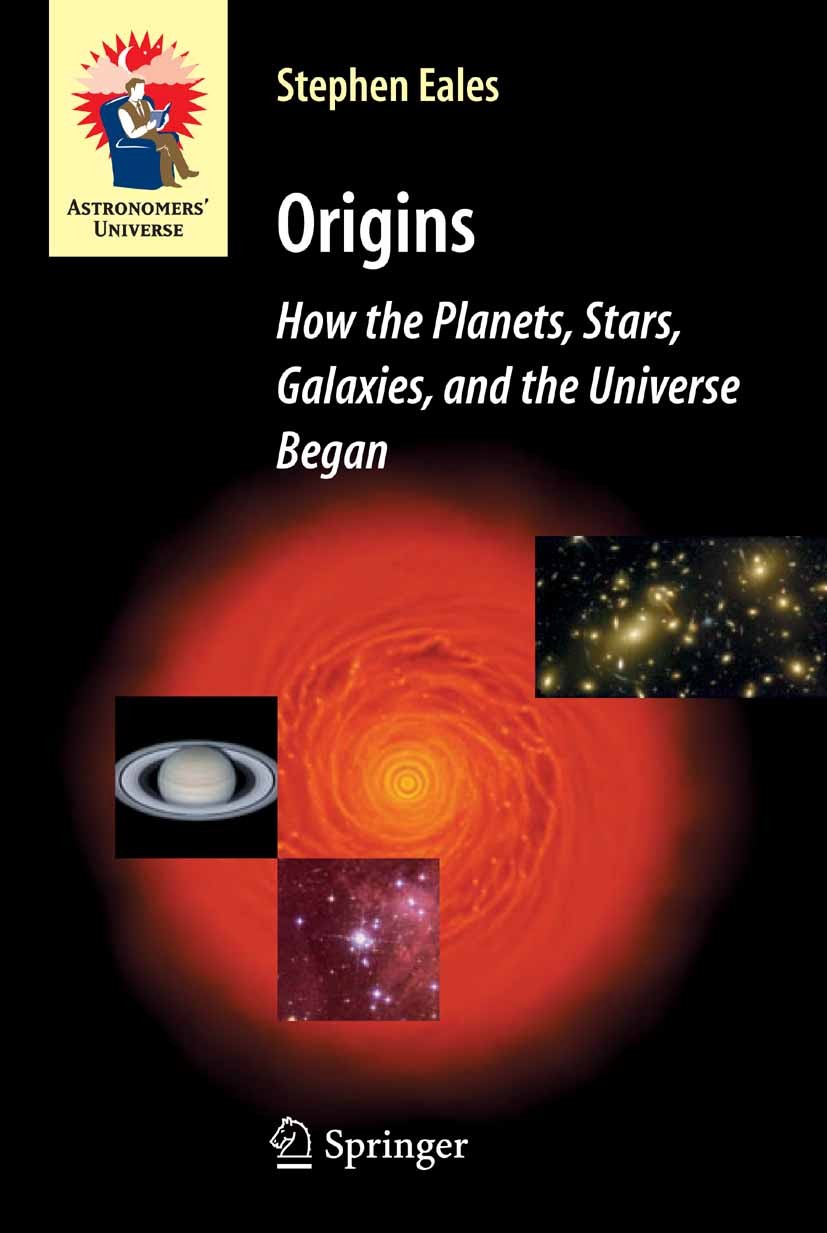| 书目名称 | Origins | | 副标题 | How the Planets, Sta | | 编辑 | Stephen Eales | | 视频video | http://file.papertrans.cn/705/704628/704628.mp4 | | 概述 | Looks at answers to the biggest questions in astronomy – the Origin Questions – the questions of how the planets, stars, galaxies and the universe were formed.Over the last decade, a revolution in obs | | 丛书名称 | Astronomers‘ Universe | | 图书封面 |  | | 描述 | .In the last decade, there has been a revolution in observational astronomy, which has meant that we are very close to answering three of the four big ‘origin questions’, of how the planets, stars, galaxies, and the universe itself were formed. As recently as 1995 we knew of only one planetary system: our own. Now we know of over a hundred, and this knowledge has helped to reveal how planetary systems form. In this same decade, new types of telescope have allowed us to penetrate through clouds of interstellar dust to see the first moments in the life of a star, and also to see directly (not infer) what galaxies looked like thirteen billion years ago, only a billion years after the Big Bang. Because of this new knowledge, we now have provisional answers to the second and third origin question. The final question is the one we can’t yet answer, but even here there have been big steps towards an answer. Within the last four years, astronomers have discovered that the universe is geometrically flat and that its expansion is accelerating, fuelled by a mysterious dark energy. This revolution in our observational knowledge of the universe – including the first precise measurements of its | | 出版日期 | Book 2007 | | 关键词 | Big Bang; Popular Science; Universe; astronomy; book explaining origins; galaxy formation; planet formatio | | 版次 | 1 | | doi | https://doi.org/10.1007/978-1-84628-700-8 | | isbn_softcover | 978-1-84996-597-2 | | isbn_ebook | 978-1-84628-700-8Series ISSN 1614-659X Series E-ISSN 2197-6651 | | issn_series | 1614-659X | | copyright | Springer-Verlag London 2007 |
The information of publication is updating

|
|
 |Archiver|手机版|小黑屋|
派博传思国际
( 京公网安备110108008328)
GMT+8, 2025-11-12 03:30
|Archiver|手机版|小黑屋|
派博传思国际
( 京公网安备110108008328)
GMT+8, 2025-11-12 03:30


